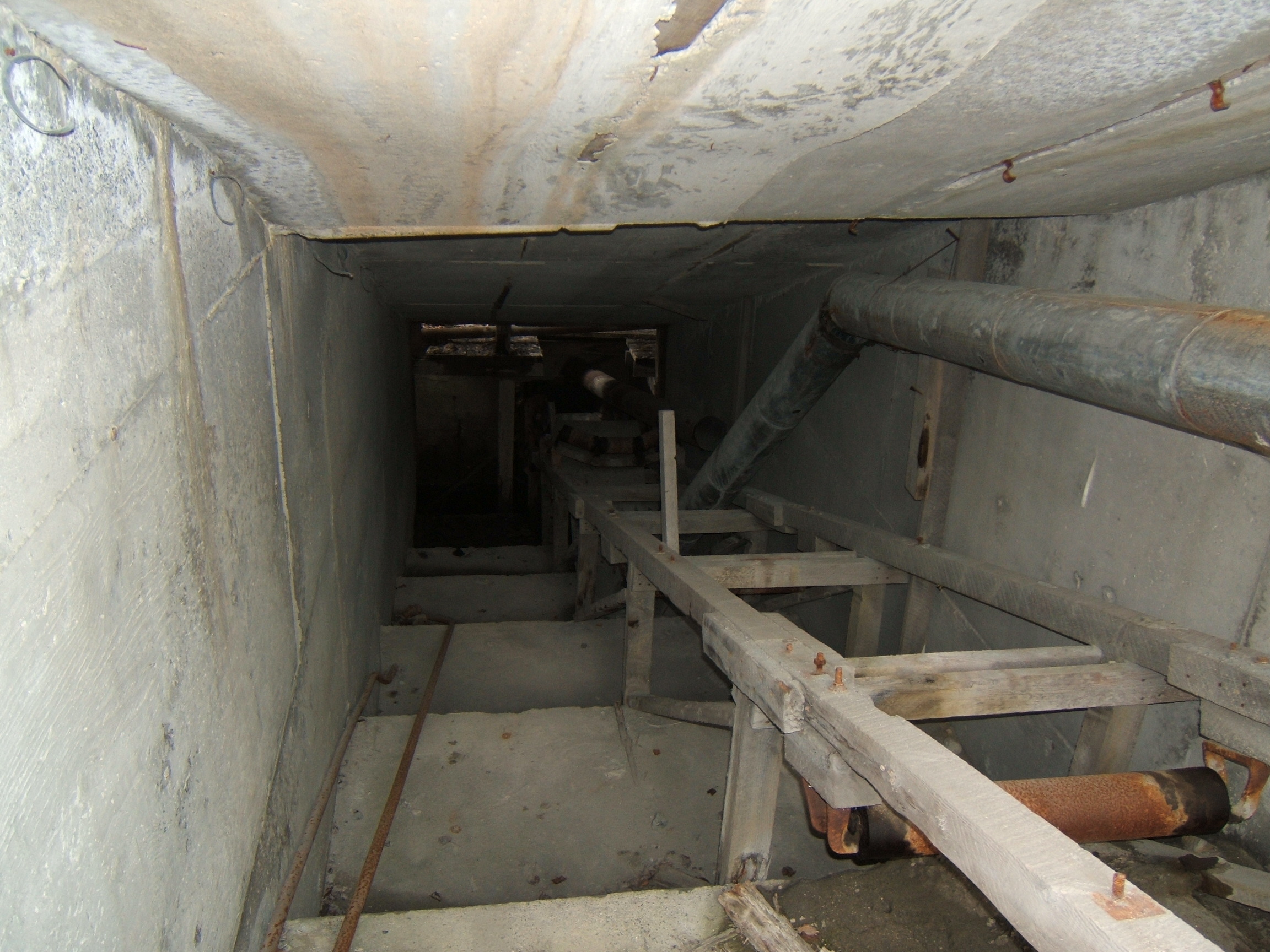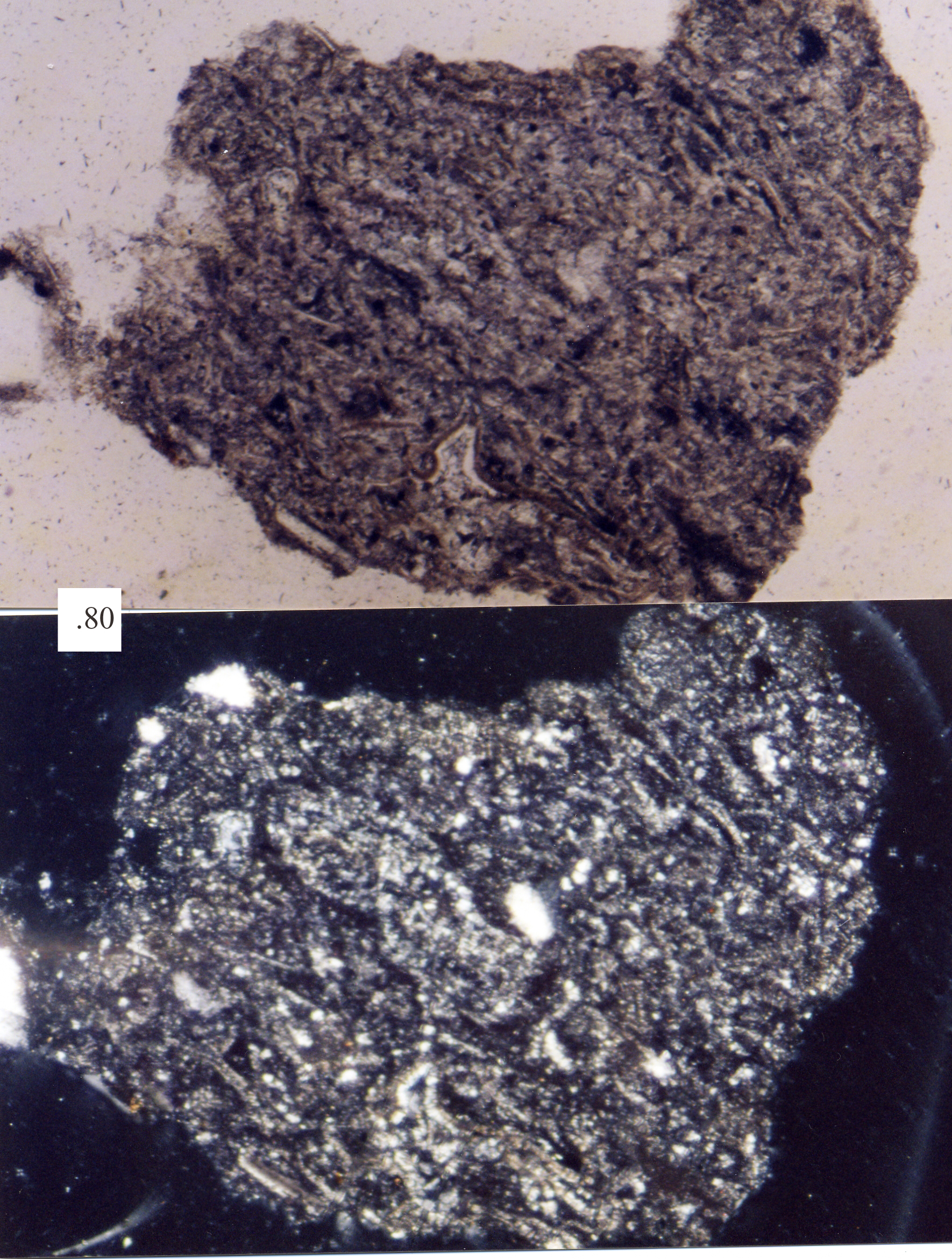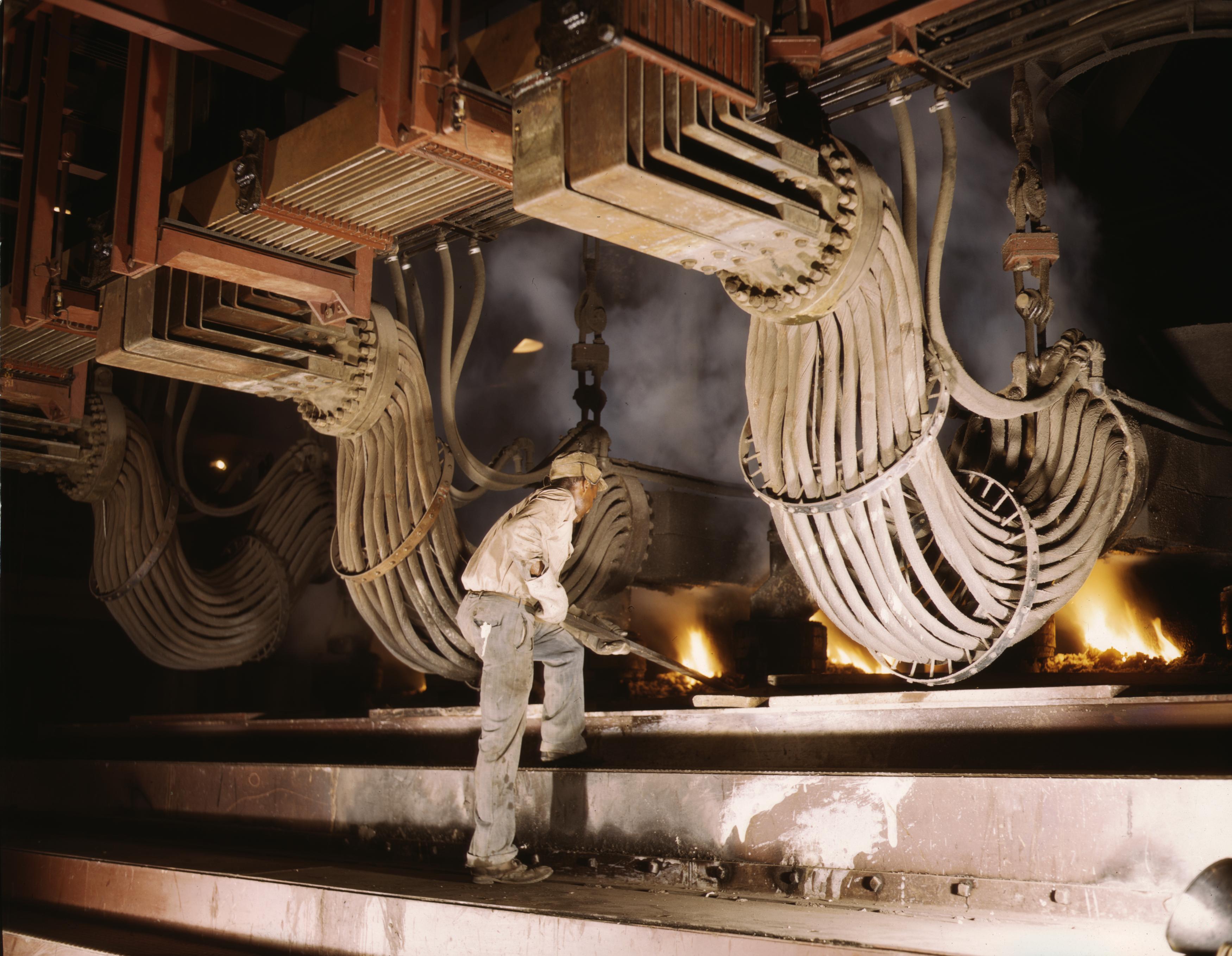|
Kanichee Mine
The Kanichee Mine, also less commonly known as the Ajax Mine, is an abandoned base metal and precious metal mine, located in the Temagami region of northeastern Ontario, Canada. It is near the small unincorporated community of Temagami North, accessed by the Kanichee Mine Road from Highway 11. The Kanichee Mine zone has been explored and mined discontinuously from as early as 1910. During the 20th century, it operated and closed down at least three times, with the most recent being from 1973 to 1976. To date, the discontinuous operation of Kanichee Mine has produced 4.2 million pounds of metal. The Kanichee area is associated with an igneous intrusion that has been termed the Kanichee layered intrusive complex. This roughly oval-shaped intrusive complex is part of a volcanic belt characterized by felsic and mafic metavolcanic rocks called the Temagami Greenstone Belt. Kanichee is one of the three most notable mines in the volcanic belt, others include the Sherman Mine in Chamber ... [...More Info...] [...Related Items...] OR: [Wikipedia] [Google] [Baidu] |
Temagami, Ontario
Temagami, formerly spelled Timagami, is a municipality in northeastern Ontario, Canada, in the Nipissing District with Lake Temagami at its heart. The Temagami region is known as ''n'Daki Menan'', the homeland of the area's First Nations community, most of whom are Anishinaabe (Ojibwe), living on Bear Island. The official name for this group is the Temagami First Nation. However, a larger group that includes these people, plus non-status residents and some non-residents is called the Teme-Augama Anishnabai. Some of the main tourist attractions within the community include old-growth red and white pine, Lake Temagami, Caribou Mountain, fishing, showings of Grey Owl from the 1930s, and over of canoe routes. It is also known as the staging point for cottage vacationing and wilderness canoeing trips on Lake Temagami, in Lady Evelyn-Smoothwater Provincial Park, and vast tracts of wilderness in the area. There are several outfitters here that cater to outdoor activit ... [...More Info...] [...Related Items...] OR: [Wikipedia] [Google] [Baidu] |
Felsic
In geology, felsic is a grammatical modifier, modifier describing igneous rocks that are relatively rich in elements that form feldspar and quartz.Marshak, Stephen, 2009, ''Essentials of Geology,'' W. W. Norton & Company, 3rd ed. It is contrasted with mafic rocks, which are richer in magnesium and iron. Felsic refers to silicate minerals, magma, and rock (geology), rocks which are enriched in the lighter elements such as silicon, oxygen, aluminium, sodium, and potassium. Molten felsic magma and lava is more viscosity, viscous than molten mafic magma and lava. Felsic magmas and lavas have lower temperatures of melting and solidification than mafic magmas and lavas. Felsic rocks are usually light in color and have specific gravity, specific gravities less than 3. The most common felsic rock is granite. Common felsic minerals include quartz, muscovite, orthoclase, and the sodium-rich plagioclase feldspars (albite-rich). Terminology Acid rock In modern usage, the term ''acid rock ... [...More Info...] [...Related Items...] OR: [Wikipedia] [Google] [Baidu] |
Copper
Copper is a chemical element; it has symbol Cu (from Latin ) and atomic number 29. It is a soft, malleable, and ductile metal with very high thermal and electrical conductivity. A freshly exposed surface of pure copper has a pinkish-orange color. Copper is used as a conductor of heat and electricity, as a building material, and as a constituent of various metal alloys, such as sterling silver used in jewelry, cupronickel used to make marine hardware and coins, and constantan used in strain gauges and thermocouples for temperature measurement. Copper is one of the few metals that can occur in nature in a directly usable, unalloyed metallic form. This means that copper is a native metal. This led to very early human use in several regions, from . Thousands of years later, it was the first metal to be smelted from sulfide ores, ; the first metal to be cast into a shape in a mold, ; and the first metal to be purposely alloyed with another metal, tin, to create bronze, ... [...More Info...] [...Related Items...] OR: [Wikipedia] [Google] [Baidu] |
Smelter
Smelting is a process of applying heat and a chemical reducing agent to an ore to extract a desired base metal product. It is a form of extractive metallurgy that is used to obtain many metals such as iron, copper, silver, tin, lead and zinc. Smelting uses heat and a chemical reducing agent to decompose the ore, driving off other elements as gases or slag and leaving the metal behind. The reducing agent is commonly a fossil-fuel source of carbon, such as carbon monoxide from incomplete combustion of coke—or, in earlier times, of charcoal. The oxygen in the ore binds to carbon at high temperatures, as the chemical potential energy of the bonds in carbon dioxide () is lower than that of the bonds in the ore. Sulfide ores such as those commonly used to obtain copper, zinc or lead, are roasted before smelting in order to convert the sulfides to oxides, which are more readily reduced to the metal. Roasting heats the ore in the presence of oxygen from air, oxidizing the or ... [...More Info...] [...Related Items...] OR: [Wikipedia] [Google] [Baidu] |
Cuniptau Mines Limited
Cuniptau Mines (a combination of the symbols Cu, Ni, Pt and Au) was a Canadian mining company from 1933 to 1937. It was incorporated in December 1933 under the leadership of B. W. Watkins with its headquarters based in Toronto, Ontario. The company was engaged in development of the Cuniptau Mine, a polymetallic ore deposit in Strathy Township of Northeastern Ontario. In later years Cuniptau Mines also acquired the Alexo Mine property in Clergue and Dundonald townships of Cochrane District. History and operations Development of the Cuniptau Mine began in 1933 with the sinking of a shaft and underground drifting on the shaft level. This was followed by deepening of the shaft to , a new level established at , drifting, crosscutting and raising in 1934. Operations in 1935 were confined mostly to surface mineral exploration. In 1936, the smelter was rebuilt to test out the possibilities of making a suitable matte from the mined ore. High-grade quartz vein material from the Cun ... [...More Info...] [...Related Items...] OR: [Wikipedia] [Google] [Baidu] |
Shaft Mining
Shaft mining or shaft sinking is the action of excavating a mine shaft from the top down, where there is initially no access to the bottom. Shaft (civil engineering), Shallow shafts, typically sunk for civil engineering projects, differ greatly in execution method from deep shafts, typically sunk for mining projects. Shaft sinking is one of the most difficult of all mining development methods: restricted space, gravity, groundwater and specialized procedures make the task quite formidable. Shafts may be sunk by conventional drill and blast or mechanised means. Historically, mine shaft sinking has been among the most dangerous of all the mining occupations and the preserve of mining contractors called sinker (mining), sinkers. Today shaft sinking contractors are concentrated in Canada, Germany, China and South Africa. The modern shaft sinking industry is gradually shifting further towards greater mechanisation. Recent innovations in the form of full-face shaft boring (akin to ... [...More Info...] [...Related Items...] OR: [Wikipedia] [Google] [Baidu] |
Trench
A trench is a type of digging, excavation or depression in the ground that is generally deeper than it is wide (as opposed to a swale (landform), swale or a bar ditch), and narrow compared with its length (as opposed to a simple hole or trapping pit, pit). In geology, trenches result from erosion by rivers or by geological movement of tectonic plates. In civil engineering, trenches are often created to install underground utilities such as Pipeline transport, gas, Water distribution system, water, Underground power lines, power and Undergrounding, communication lines. In construction, trenches are dug for foundations of buildings, retaining walls and dams, and for Tunnel construction#Cut-and-cover, cut-and-cover construction of tunnels. In archaeology, the "trench method" is used for searching and Excavation (archaeology), excavating ancient ruins or to dig into stratum, strata of sedimented material. In geotechnical engineering, trench investigations locate faults and investigat ... [...More Info...] [...Related Items...] OR: [Wikipedia] [Google] [Baidu] |
Lake Temagami
Lake Temagami, formerly spelled as Lake Timagami, is a lake in Nipissing District in northeastern Ontario, Canada, situated approximately 80 km north of North Bay. The lake's name comes from ''dimii-agamiing'' "tih-MEE-uh-guh-MEENG", which means "it is deep water by the shore" in the Ojibwa language. Geography The lake is irregularly shaped with long north, northeast and southwest arms, shorter northwest and south arms and several smaller bays. The town of Temagami is located at the end of the northeast arm of the lake. It extends almost 50 km from north to south and about 35 km from east to west. There are approximately 1,259 islands, the largest of which is Temagami Island. The lake's outflow is the Temagami River which in turn flows into the Sturgeon River. A number of peninsulas are associated with the lake, such as the McLean, Cynthia and Joan peninsulas, as well as Sand Point, which separates the Northwest Arm from the rest of the lake. The lands sur ... [...More Info...] [...Related Items...] OR: [Wikipedia] [Google] [Baidu] |
Temagami Island
Temagami Island, formerly spelt as Timagami Island, is an island in Lake Temagami in Northeastern Ontario, Canada. It is the largest island within the lake, with Bear Island coming second. The island has many hiking trails that lead into the old-growth forest that is a mix of large white and red pine trees. Temagami Mine, later known as Copperfields Mine, was a copper mine that opened on Temagami Island in 1954. It was considered to be the largest deposit of nearly pure chalcopyrite ever discovered in Canada. The mine closed in 1972. Temagami Island lies within n'Daki Menan, the homeland of the Teme-Augama Anishnabai, which covers almost . Temagami Island is also home to Camp Wabikon, an overnight summer camp for youth ages 6–16. A bright white palladium mercury telluride mineral was discovered on Temagami Island in 1973 called temagamite,http://www.mindat.org/min-3908.html Temagamite: Temagamite mineral information and data. Retrieved on 2007-08-31 named after its discover ... [...More Info...] [...Related Items...] OR: [Wikipedia] [Google] [Baidu] |
Copperfields Mine
Copperfields Mine, originally known as Temagami Mine, is an abandoned copper and silver mine on Temagami Island in Lake Temagami, Ontario, Canada. The mine opened in 1955 and comprises both underground and surface workings within a sulfide ore body. Situated in Phyllis Township, the mine produced 34,000,000 dollars Canadian with 80 million pounds of copper, 230,028 ounces of silver and 13,271 ounces of gold. It was considered to be the largest deposit of nearly pure chalcopyrite ever discovered in Canada. A mill was not initially needed because the ore was 28% copper. The mine closed in 1972 and is now flooded by water. Ruins of the Copperfields mill are present as foundations. It is possible to find mineral specimens in the spoil heaps of the old mine, such as chalcopyrite, pyrite, bornite, malachite, dolomite, hessite, merenskyite, millerite, palladium, quartz and others. The Lake Temagami Access Road was created to ship ore from the mine site. Copper-nickel mineralization a ... [...More Info...] [...Related Items...] OR: [Wikipedia] [Google] [Baidu] |
Strathy Township
Strathy Township is a square-shaped geographic township comprising a portion of the municipality of Temagami in Northeastern Ontario, Canada. It is used for geographic purposes, such as land surveying and natural resource explorations. At least four other geographic townships surround Strathy Township, namely Best Township, Cassels Township, Strathcona Township and Chambers Township. Features and localities * Arsenic Lake * Beanland Mine * Big Dan Mine * Big Dan Shear Zone * Caribou Lake * Caribou Mountain * Chambers-Strathy Batholith * Hermiston-McCauley Mine * Johnny Creek *Kanichee layered intrusive complex * Kanichee Mine *Lake Temagami * Leckie Mine * Link Lake * Link Lake Deformation Zone *Milne-Sherman Road * Milne Townsite * Net Lake *Net Lake-Vermilion Lake Deformation Zone * Sherman Mine * Sherman volcano * Snake Island Lake *Temagami Temagami, formerly spelled Timagami, is a municipality in northeastern Ontario, Canada, in the Nipissing District with Lake Temaga ... [...More Info...] [...Related Items...] OR: [Wikipedia] [Google] [Baidu] |
Sherman Mine
Sherman Mine is a closed open pit mine in Temagami, Ontario, Canada. It was a major producer of iron ore, starting production in 1968 and closing in 1990. Sherman was the largest open pit mine in Temagami, consisting of seven open pits known as the East Pit, South Pit, North Pit, West Pit and the Turtle Pits. The mine was discovered in the early part of the twentieth century, however interest was limited as a result of silver and gold discoveries in northeastern Ontario. While the Ontario government offered bounties to producers of iron ore, there was little interest in putting any iron mine into production as a result of cheaper Mesabi Range ores from the US and the Great Depression. It was only in the 1950s that Canadian steel producers started to investigate domestic supplies of iron ore. This would lead to the re-opening of the Moose Mountain Mine and development of the Adams, Sherman and Bruce Lake mines in Northern Ontario. The Sherman Mine operated in tandem with the Adams M ... [...More Info...] [...Related Items...] OR: [Wikipedia] [Google] [Baidu] |




